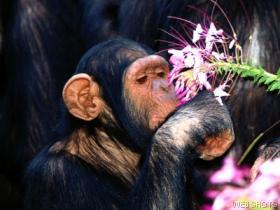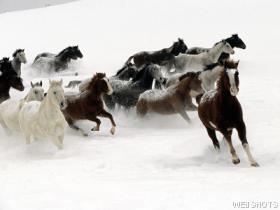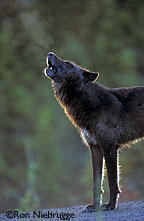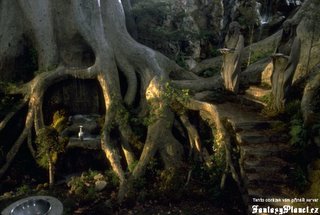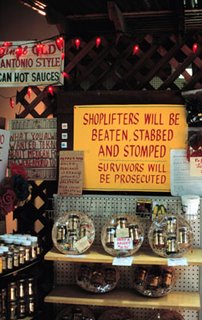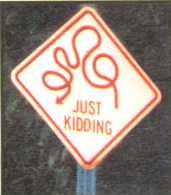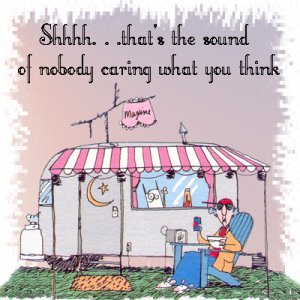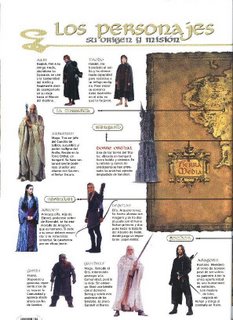aria's thoughts : emblazened sojournings
About Me
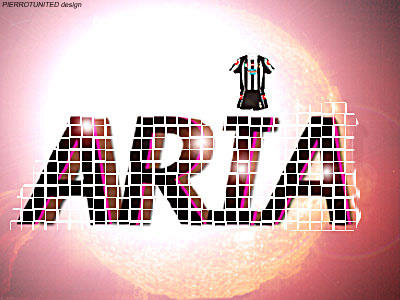
- Name: aria
- Location: Trinidad & Tobago
"The world is not what I think, but what I live through." ~ Maurice Merleau-Ponty
Wednesday, December 28, 2005
Tuesday, December 20, 2005
Wednesday, December 14, 2005
** Vanuatu Volcano
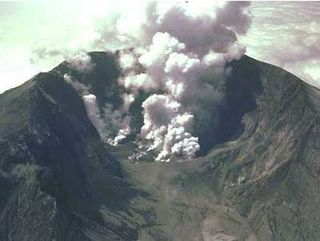
There are 10,000 nervous people in the South Pacific island nation of Vanuatu today. That's because last week, the Mount Manaro volcano, king of the island of Ambae, shot a column of steam, ash, and toxic gas 10,000 feet (3,000 meters) into the air. About 2,000 tons of ash continue to fall from the volcano each day.
So far, the toxic gas has some people sick--but nothing worse than that. Still, authorities are taking no chances. Four ships are anchored offshore, ready to ferry the people of Ambae to safety should Mount Manaro really lose its cool.
Scientists' biggest worry? A lahar. That's right, a lahar. Lakes of lava lapping at people's heels are for Hollywood volcanoes. Real ones kill with lahars, pyroclastic flows, and other dangers less photogenic, but faster moving and more deadly, than molten rock.
Here are the top five.
Top 5 Ways Volcanoes Kill:
In the movies, volcanoes kill people by raining red-hot rocks down on them or by cutting off their escape routes with pools of lava. But real volcanoes don't need to resort to such theatrics. They have more effective ways to do you in.
1. Pyroclastic Flows
A deadly mixture of volcanic gas, ash, and rock, a pyroclastic flow can rush down a volcano as fast as 100 miles per hour (160 km/h) and be as hot as 1,300 degrees Fahrenheit (700 degrees C). The dense and superheated cloud generally obliterates buildings, incinerates obstacles, and kills any creature in its path.
Where it happened: In AD 79, Mount Vesuvius buried the town of Pompeii with ash and pumice. Several thousand Romans suffocated in a cloud of red-hot ash and poisonous gas. The ash settled around their bodies and set as hard as concrete, so that 19th-century archaeologists could make strikingly lifelike plaster casts of bodies that had crumbled to dust 2,000 years before.
2. Lahars
These mudflows can be as dense as wet concrete but move like raging rivers. They slide down volcanic mountains with enough force to carry boulders at breakneck speed for miles. Obstacles in a lahar's path are typically battered, broken, and buried in mud.
Where it happened: Twenty years ago, Nevado del Ruiz in Colombia blasted molten rock outward, which melted the mountain's cap of ice and snow. A wall of water, mud, and ash raced down the mountain. Just before midnight on November 13, 1985, it buried the town of Armero, killing 23,000 people 45 miles (72 km) away.
3. Landslides
Avalanches are common on volcanoes, where loosely packed rock and ash may sit precariously on a mountain getting steeper by the minute. Seismic tremors trigger the slide, which can have deadly effects.
Where it happened: The worst volcanic disaster in Japan's history happened in 1792, when one of the Unzen volcano's many lava domes collapsed. A massive landslide ripped through Shimabara City. The debris then crashed into the sea and generated a tsunami that devastated the coast. In the end, as many as 15,000 people were dead.
4. Tsunami
These cataclysmic waves are often called tidal waves, but that's not really correct--they have nothing to do with tides. Tsunamis are formed by seismic phenomena such as earthquakes and volcanoes. By the time a tsunami approaches the shore, the wave that was hardly noticeable when it formed out at sea is huge.
Where it happened: When Krakatoa erupted in 1883, it created one of the most catastrophic disasters in history. The explosion on the Indonesian volcanic island was so great that the boom could be heard thousands of miles away. Ash shot 50 miles (80 km) into the air. So much material was expelled that most of the island collapsed into the sea, triggering a tsunami that smashed into coastal towns in Java and Sumatra and left more than 30,000 people dead.
5. Gas
Volcanoes belch gases from deep inside the Earth. Some of them just smell bad, but others kill. Sulfur dioxide and carbon dioxide are just two of the noxious gases that seep from vents in the Earth's crust.
Where it happened: Volcanic activity in the African nation of Cameroon in 1986 caused a huge amount of carbon dioxide to spurt up through Lake Nyos and reach a deadly concentration. The suffocating cloud drifted over nearby villages and killed 1,700 people, most as they slept.
And After All That, You Starve
Even after the eruption, your problems aren't over. The ash and poisonous gases can choke vegetation and spoil fresh water sources. The next thing you know, your crops have failed and your livestock are dying. An eruption that directly kills a thousand people might leave tens of thousands dead from famine and disease in the months that follow.
Where it happened: Mount Laki in Iceland erupted for more than eight months in 1783 and 1784, hurling lava over 220 square miles (570 sq km). The gases stunted crops and grasses and killed most of the island's domesticated animals. More than 9,300 people--one fifth of Iceland's population--perished during the resulting famine.
Mark Diller
December 13, 2005

Sunday, December 11, 2005
** Phrase origins: "Cold enough to..."

Meaning
Very cold weather conditions.
Origin
Some references say that the brass triangles that supported stacks of iron cannonballs on sailing ships were called monkeys and that in cold weather, as brass contracts more than iron, the triangles contracted sufficiently for the balls to fall off.
This is nonsense but it so widespread a story that we need a little examination to help kill it off.
The young boys who helped with the loading of cannons on naval ships were called powder monkeys, but that's as far as monkey business goes on board ship. The Royal Navy records that, on their ships at least, cannonballs were stored in planks with circular holes cut into them. There's no record of these planks having been given a name - they certainly weren't called monkeys.
Also, a little geometry shows that a pyramid of balls will topple over if the base is tilted by more than 30 degrees. This tilting, not to mention any sudden jolting, would have been commonplace on sailing ships and it just isn't plausible that cannonballs were stacked this way.
For those wanting a bit more detail, here's the science bit. The coefficient of expansion of brass is 0.000019; that of iron is 0.000012. If the base of the stack were one metre long the drop in temperature needed to make the 'monkey' shrink relative to the balls by just one millimetre, would be around 100 degrees Celcius. It is hardly credible that amount of change would have the slightest effect. In any case in weather like that the sailors would probably have better things to think about.
The real origin is not so fanciful. If you've heard the phrase 'hear no evil, see no evil, speak no evil' you are probably familiar with the sets of sculptured brass monkey figures that have used as paperweights since at least the early 20th century. The term brass monkey itself has been in use that long too, as in The Story of Waitstill Baxter, Kate Wiggin, 1913:
"The little feller, now, is smart's a whip, an' could talk the tail off a brass monkey".
The sailing ship story has some romance but it is another of those dreamed up by CANOE (the Committee to Ascribe a Naval Origin to Everything). In reality, the phrase in question is just a colourful bit of language to the effect that "it's so cold that even an inanimate sculpture can feel the effects of it".

Friday, December 09, 2005
Friday, December 02, 2005
Thursday, December 01, 2005
** Phrase origins: From sea to shining sea

Meaning
From one coast to another.
Origin
Taken from a line in 'America the Beautiful', the patriotic song written by Katharine Lee Bates in 1893. She wrote other versions later, in 1904 and 1913.
O beautiful for spacious skies,
For amber waves of grain,
For purple mountain majesties
Above the fruited plain!
America! America!
God shed his grace on thee
And crown thy good with brotherhood
From sea to shining sea!
She wrote the song following an inspirational visit to Pikes Peak, Colorado, USA.
"One day some of the other teachers and I decided to go on a trip to 14,000-foot Pikes Peak. We hired a prairie wagon. Near the top we had to leave the wagon and go the rest of the way on mules. I was very tired. But when I saw the view, I felt great joy. All the wonder of America seemed displayed there, with the sea-like expanse."
The phrase is also frequently associated with Canada. The Canadian national motto - "A mari usque ad mare", translates as "From sea to sea". This has biblical origin:
"He shall have dominion from sea to sea and from the river unto the ends of the earth (Psalm 72:8)".





